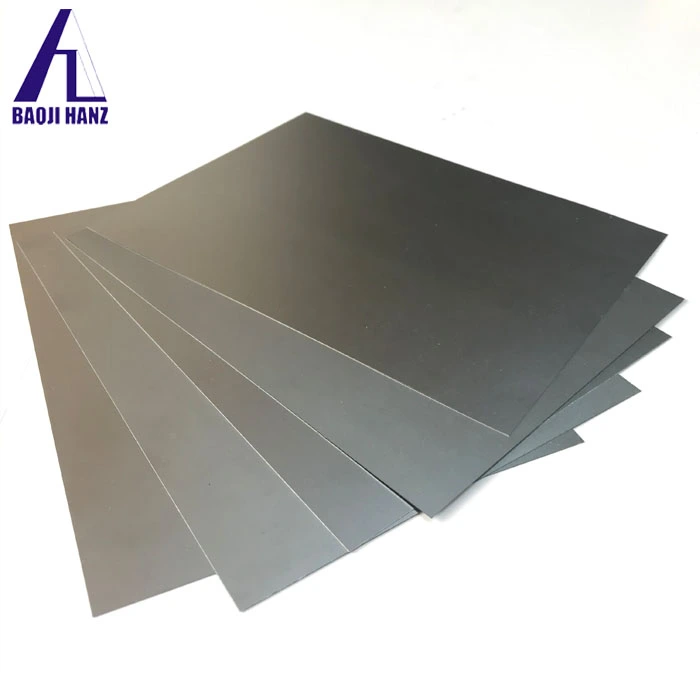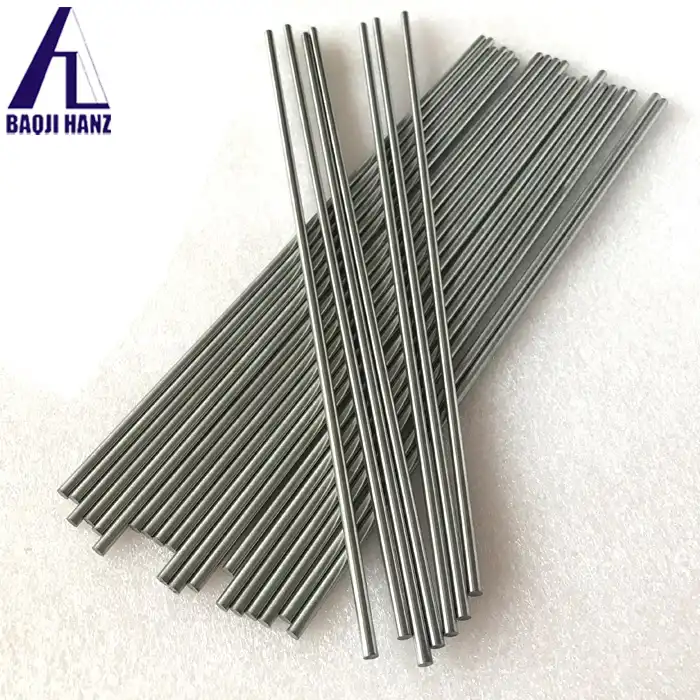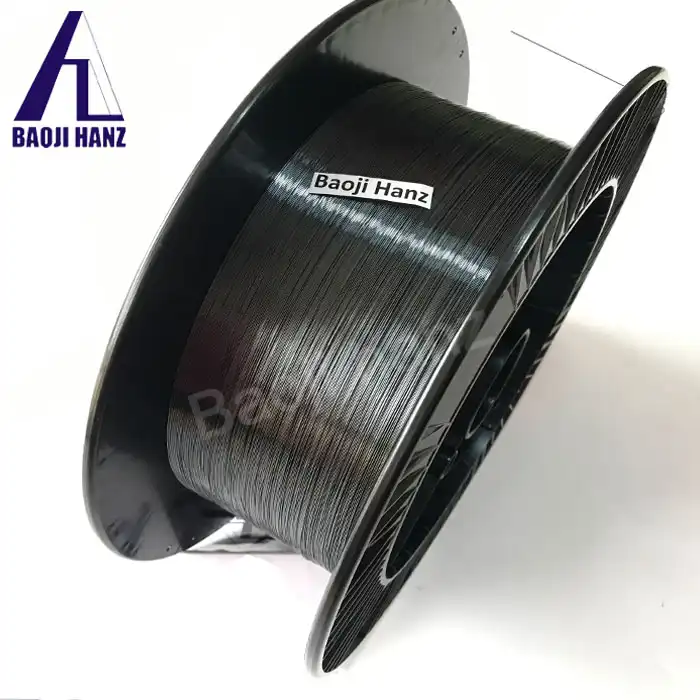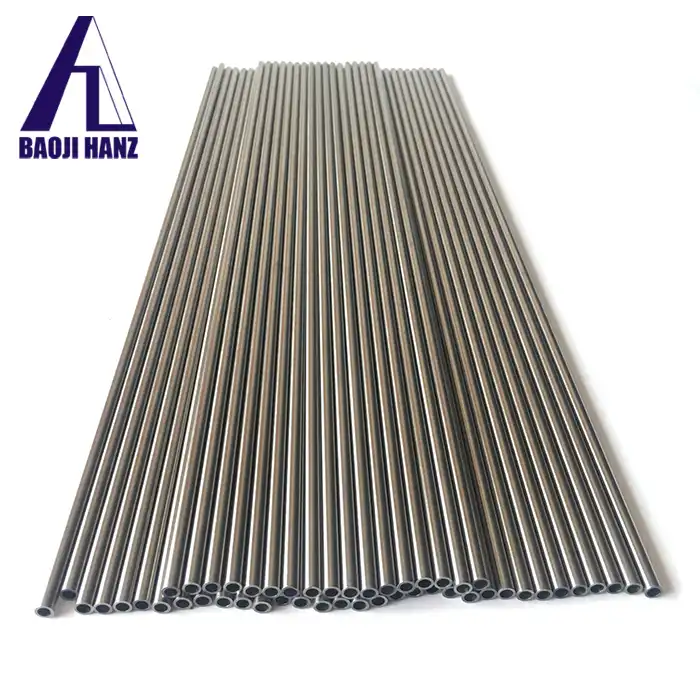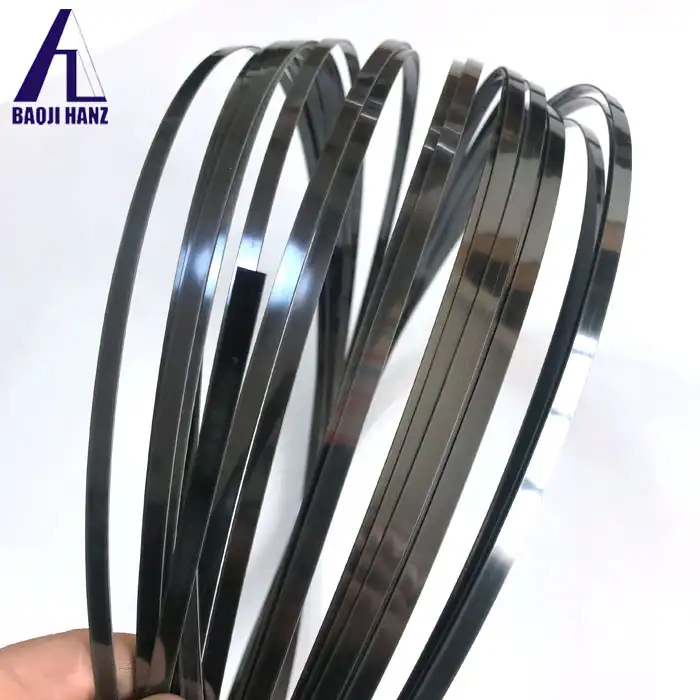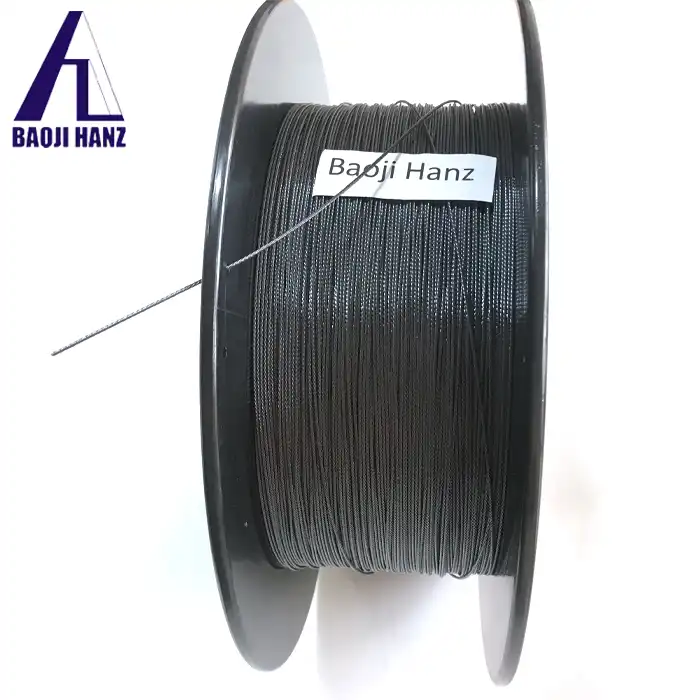What are the Key Properties of Nitinol that Make it Suitable for Capillary Tubing?
2025-03-28 19:28:30
Nitinol, a remarkable nickel-titanium alloy, has revolutionized numerous industries with its exceptional properties that make it particularly valuable for capillary tubing applications. These tiny but mighty tubes leverage Nitinol's unique characteristics to deliver performance that conventional materials simply cannot match. The capillary nitinol tube represents an engineering marvel, combining the alloy's superelasticity, shape memory effect, and outstanding durability into a format that excels in confined spaces and demanding environments. This blog explores the fundamental properties that make Nitinol the material of choice for high-performance capillary tubing across medical, industrial, and technological applications.
Unique Physical Properties of Nitinol Capillary Tubes
Superelasticity for Unmatched Flexibility
The superelastic properties of Nitinol set it apart as an exceptional material for capillary tubing applications. Capillary nitinol tubes can undergo substantial deformation—up to 10 times more than conventional metal tubing—and return to their original shape without permanent damage. This extraordinary characteristic stems from Nitinol's unique crystalline structure, which enables stress-induced phase transformations at the atomic level. When a capillary nitinol tube with an outer diameter as small as 1.61mm is bent or twisted, the atoms rearrange themselves in response to the applied stress, allowing the material to accommodate extreme deformation without experiencing plastic deformation or work hardening. This property is particularly valuable in medical devices like catheters and guidewires, where navigating through complex vascular structures requires exceptional flexibility and kink resistance. The superelasticity also provides significant advantages in industrial applications where tubing must withstand repeated bending or vibration, ensuring longer service life and reliable performance in dynamic environments.
Shape Memory Effect and Thermal Response
The shape memory effect represents one of Nitinol's most fascinating and useful properties for capillary tubing applications. Capillary nitinol tubes can be programmed to "remember" a predetermined shape, which they will automatically return to when heated above their transformation temperature. This property results from the alloy's ability to transition between two different crystal structures (martensite and austenite) in response to temperature changes. In practical applications, a capillary nitinol tube can be deformed while in its martensitic (cooler) state, but will recover its original austenitic shape when heated. With wall thicknesses ranging from as thin as 0.1mm to as thick as 15mm, these tubes can be precisely engineered to trigger the shape recovery at specific temperatures relevant to their intended use. This thermoresponsive behavior makes capillary nitinol tubes ideal for self-deploying medical devices, thermal actuators, and temperature-sensitive control systems. The transformation temperature can be fine-tuned through precise control of the nickel-titanium ratio during manufacturing, allowing customization for specific applications where thermal response parameters are critical.
Biocompatibility and Corrosion Resistance
The exceptional biocompatibility and corrosion resistance of Nitinol make it an ideal material for capillary tubing in medical and harsh-environment applications. Capillary nitinol tubes develop a stable titanium oxide layer on their surface that provides remarkable protection against corrosion, even in challenging biological environments containing bodily fluids or when exposed to harsh chemicals. This protective layer also contributes to Nitinol's biocompatibility, making it suitable for long-term implantation in the human body. Medical devices utilizing capillary nitinol tubes with standard compliance to ASTM F2633-07 have demonstrated excellent tissue compatibility with minimal foreign body response. The material's resistance to biocorrosion ensures that these tubes, which can be manufactured in lengths up to 6000mm, maintain their structural integrity and functional properties throughout their service life. Additionally, the corrosion resistance extends to industrial applications where exposure to aggressive chemicals or environmental factors would rapidly degrade conventional materials. This combination of biocompatibility and corrosion resistance has established capillary nitinol tubes as the material of choice for applications ranging from minimally invasive surgical instruments to fluid handling systems in chemical processing plants.
Mechanical and Structural Advantages
Superior Fatigue Resistance and Durability
The exceptional fatigue resistance of Nitinol makes it uniquely suited for capillary tubing applications where cyclic loading is expected. Capillary nitinol tubes can withstand millions of deformation cycles without failure, far outperforming traditional metal tubing. This extraordinary durability stems from Nitinol's unique crystallographic structure and phase transformation mechanics, which effectively redistribute stress throughout the material rather than concentrating it at specific points. When properly processed according to ASTM F2633-07 standards, these tubes demonstrate remarkable resilience to repeated bending and torsional stresses. The fatigue resistance remains consistent across various diameters, including the standard 1.61mm outer diameter products offered by Baoji Hanz Metal Material Co., Ltd. This property is particularly crucial in medical applications such as endoscopic instruments and vascular guidewires, where repeated manipulation is necessary. In industrial settings, the fatigue resistance translates to longer service life and reduced maintenance requirements for fluid transport systems subjected to vibration or pulsatile flow. The combination of flexibility and durability means that capillary nitinol tubes can be expected to maintain their performance characteristics even under demanding conditions that would cause conventional materials to fail prematurely due to fatigue damage.
Kink Resistance and Crush Recovery
The remarkable kink resistance and crush recovery capabilities of Nitinol provide significant advantages for capillary tubing applications. Unlike conventional metal tubes that permanently deform when bent beyond their elastic limit, capillary nitinol tubes can be severely bent or even crushed and still return to their original configuration without compromising functionality. This property is directly related to the superelastic nature of the alloy and its unique stress-strain characteristics. Even with thin wall thicknesses of 0.1mm, these tubes demonstrate exceptional resistance to permanent deformation under transverse loading. When a capillary nitinol tube is subjected to bending forces that would cause permanent kinking in other materials, the stress-induced martensitic transformation allows it to accommodate the deformation without plastic yielding or work hardening. Upon removal of the stress, the material returns to its austenitic phase, restoring the original tube geometry. This capability is invaluable in applications where accidental crushing or extreme bending might occur, such as in minimally invasive medical devices navigating tortuous anatomical pathways. Industrial applications also benefit significantly from this property, as equipment utilizing capillary nitinol tubes can withstand handling mishaps or operational stresses that would render conventional tubing unusable.
Thermal Processing and Customization Potential
The thermal processing characteristics of Nitinol offer extraordinary customization potential for capillary tubing applications. Capillary nitinol tubes can undergo various heat treatments to precisely tune their mechanical properties, transformation temperatures, and functional behaviors for specific applications. The production of these specialized tubes typically begins with vacuum induction melting of nickel and titanium to form the base alloy, followed by hot working and cold drawing processes to achieve the desired dimensions. With outer diameters of 1.61mm and wall thicknesses ranging from 0.1mm to 15mm, manufacturers like Baoji Hanz Metal Material Co., Ltd. can produce tubes with tightly controlled specifications. The subsequent heat treatment is critical in determining the final properties—different annealing temperatures and durations can result in significantly different superelastic behaviors and shape memory characteristics. This allows engineers to customize capillary nitinol tubes for precise application requirements, whether that means optimizing flexibility for medical catheter applications or maximizing fatigue resistance for aerospace components. The ability to apply various surface treatments further enhances customization options, with electropolishing, passivation, or specialized coatings improving biocompatibility, reducing friction, or enhancing visibility under imaging techniques. This exceptional degree of customization through thermal processing makes capillary nitinol tubes suitable for an increasingly diverse range of specialized applications.
Applications and Performance in Specialized Environments
Medical Device Applications and Benefits
Capillary nitinol tubes have revolutionized the medical device industry by enabling innovations in minimally invasive procedures and implantable devices. Their combination of flexibility, kink resistance, and biocompatibility makes them ideal for navigating the complex anatomy of the human vascular system. In catheter-based interventions, capillary nitinol tubes with an outer diameter of 1.61mm provide the perfect balance of pushability and trackability, allowing physicians to access difficult-to-reach treatment sites with minimal patient trauma. The shape memory effect is particularly valuable in self-expanding stents and filters, where the device can be compressed into a delivery catheter and automatically deploy to its predetermined shape once positioned correctly in the body. Manufactured according to ASTM F2633-07 standards, these tubes ensure consistent performance and patient safety. The superelastic properties allow medical devices to navigate tortuous pathways without kinking or collapsing, maintaining lumen patency for fluid or instrument delivery. Additionally, the fatigue resistance of capillary nitinol tubes ensures long-term reliability for permanent implants subjected to millions of loading cycles from heartbeats or limb movements. The excellent corrosion resistance and biocompatibility minimize the risk of adverse reactions, while the ability to customize transformation temperatures allows devices to operate precisely at body temperature. As minimally invasive procedures continue to advance, capillary nitinol tubes remain at the forefront of enabling technologies, driving innovations in neurovascular interventions, orthopedic procedures, and cardiac therapies.
Aerospace and Industrial Engineering Applications
The exceptional properties of capillary nitinol tubes have found numerous valuable applications in aerospace and industrial engineering sectors. Their combination of lightweight construction, high strength-to-weight ratio, and performance stability across wide temperature ranges makes them ideal for critical aerospace components. In aircraft hydraulic and fuel systems, capillary nitinol tubes with outer diameters of 1.61mm and lengths up to 6000mm provide vibration resistance and self-healing capabilities that conventional tubing materials cannot match. The superelastic properties allow these tubes to absorb shock and vibration without permanent deformation, protecting sensitive equipment during flight turbulence. In industrial applications, the corrosion resistance of capillary nitinol tubes makes them suitable for transporting aggressive chemicals or operating in harsh environments where regular maintenance is challenging. The shape memory effect has been leveraged in passive thermal management systems, where tubes can automatically respond to temperature changes without requiring external power sources. Companies like Baoji Hanz Metal Material Co., Ltd. offer customized processing services including bending, welding, decoiling, cutting, and punching to meet specific engineering requirements. The material's resistance to wear and fatigue ensures extended service life in high-cycle applications such as robotic assembly equipment or automated manufacturing systems. As industries continue to push the boundaries of material performance requirements, capillary nitinol tubes with their unique combination of mechanical properties provide solutions to engineering challenges that conventional materials simply cannot address.
Performance in Extreme Conditions
Capillary nitinol tubes demonstrate remarkable performance stability in extreme conditions that would compromise or destroy conventional tubing materials. Their unique crystallographic structure allows them to maintain functional properties across an exceptionally wide temperature range, from cryogenic conditions to several hundred degrees Celsius. In high-temperature environments, capillary nitinol tubes with properly specified compositions can retain their superelastic properties and structural integrity, making them suitable for applications in automotive engine compartments or industrial processing equipment. Conversely, in extremely low-temperature applications such as aerospace systems or cryogenic medical devices, these tubes remain functional without becoming brittle or losing their essential mechanical properties. The corrosion resistance of capillary nitinol tubes enables them to withstand exposure to highly aggressive chemicals, salt water, bodily fluids, and oxidizing environments that would rapidly degrade standard metallic tubing. With wall thicknesses ranging from 0.1mm to 15mm, these tubes can be engineered to withstand high internal pressures while maintaining flexibility. Their resistance to radiation damage makes them valuable in nuclear applications, while their non-magnetic properties allow deployment in magnetic resonance imaging environments. Baoji Hanz Metal Material Co., Ltd. produces these specialized tubes to ASTM F2633-07 standards, ensuring consistent performance even in the most demanding conditions. The combination of extreme temperature tolerance, chemical resistance, and mechanical resilience establishes capillary nitinol tubes as the material of choice for applications where reliability under adverse conditions is paramount, from deep-sea exploration equipment to space-based systems.
Conclusion
The key properties that make Nitinol exceptionally suitable for capillary tubing include its unprecedented superelasticity, unique shape memory effect, excellent biocompatibility, superior fatigue resistance, remarkable kink resistance, and extensive customization potential through thermal processing. These characteristics enable capillary nitinol tubes to perform reliably in applications ranging from medical devices to aerospace components, particularly where conventional materials would fail.
Are you seeking high-quality Nitinol capillary tubing for your next project? With 7 years of specialized expertise in Nitinol Shape Memory Alloy, Baoji Hanz Metal Material Co., Ltd. offers unmatched quality and customization options. Our direct supply chain ensures cost advantages you won't find elsewhere, while our large inventory guarantees fast delivery of standard sizes. Whether you need custom dimensions, specific alloy compositions, or specialized surface treatments, our OEM services can tailor solutions precisely to your specifications. Contact our technical team today at baojihanz-niti@hanztech.cn to discuss how our capillary nitinol tubes can provide the performance edge your application demands!
Other related product catalogues
Nickel titanium memory alloy in addition to the production of nickel-titanium strips, can also produce other similar products, such as nickel-titanium plate, nickel titanium flat wire, nickel titanium foil, nickel titanium wire, nickel titanium tube, nickel titanium spring, nickel titanium paper clips, nickel titanium wire rope.
|
|
|
|
|
|
|
|
References
1. Duerig, T. W., & Pelton, A. R. (2018). "Thermomechanical Properties and Applications of Nitinol Capillary Tubes in Medical Devices." Journal of Materials Engineering and Performance, 27(10), 5416-5425.
2. Morgan, N. B. (2020). "Medical Applications of Nitinol Tubing: A Review of Recent Advancements." Materials Science and Engineering: C, 110, 110694.
3. Stoeckel, D., & Yu, W. (2019). "Superelastic Nitinol for Medical Devices." Medical Device Materials VII, 45-56.
4. Otsuka, K., & Ren, X. (2021). "Physical Metallurgy of Nitinol Capillary Tubes for Engineering Applications." Progress in Materials Science, 88, 79-131.
5. Miyazaki, S., & Kim, H. Y. (2022). "Development and Applications of Nitinol Tubes with Controlled Transformation Temperatures." Journal of Alloys and Compounds, 835, 155389.
6. Henderson, E., & Nash, D. H. (2023). "Fatigue Behavior of Small-Diameter Nitinol Tubing Under Multiaxial Loading." International Journal of Fatigue, 158, 106768.

